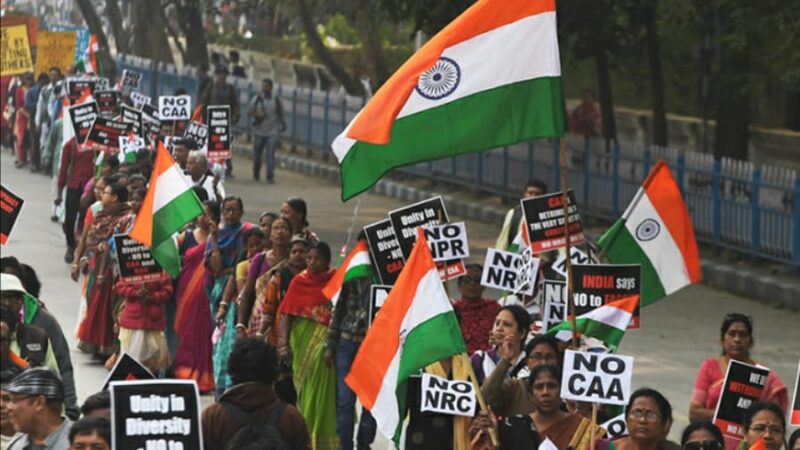The Ratio of Governance: A Gender Equation

Feminism has invariably been focusing on the ratio of 1:1 in a bid to reach to out the possibility of equilibrium. It is this mathematical edifice that accounts for the notion of gender balance for any given social phenomenon. A same treatment was palpable in the handiwork of Mr. Justin Trudeau as far as his new cabinet is concerned. Mr. Trudeau, the second youngest in Canada’s history to occupy the chair, has unveiled a cabinet which mirrors an equal number of women and men, comprising 15 from each, along with its ethnic diverse outfit. In a gesture of acknowledgement of the rational necessity to strive for parity on gender lines, the new government has emerged to be the cynosure. An aroma of grandeur filled with applause was the response of the audience to his answer – “because, its 2015” – regarding the reason for the nature of the new cabinet.  Nevertheless, it would tantamount to an error to accord it with the tag of a first instance as such, by virtue of the fact that there have been parallel occasions which could be illustrated to remind the world of proving Mr. Trudeau’s attempt (though praiseworthy) is actually not a precedent for the future. Rather, it’s just a replica of “portraits” that were drawn long ago. At the same time, it would be injustice to deny the truth that obviously he grabs the primacy for being the first male Prime Minister of any country for that matter, to distribute an equal number of port folios among both sexes. Gro Harlem Brundtland, the first female Prime Minister of Norway possesses the credit for forming the first government in the world to have its ground on the equation entirely around the ‘=’ sign. Brundtland, in her second term during 1986-89, has constituted her team of 18 which carries an equal weight on both sides in the balance. As usual, the world hesitated to pay heed to that hitherto-never-seen action which seldom received attention in any significant historical records. A second instance was followed in 2014 when Nicola Sturgeon, the first Scottish female First Minister gave a nod for breaking the convention by weaving an ‘inner circle’ which represents both sections devoid of any discrimination. The reason is apparent why these two landmarks have been kept at bay. The world is unwilling to break the silence and clamor the early initiatives, either out of ignorance or the feeling of being hard to digest the so called ‘radicalism’ by two women.
Nevertheless, it would tantamount to an error to accord it with the tag of a first instance as such, by virtue of the fact that there have been parallel occasions which could be illustrated to remind the world of proving Mr. Trudeau’s attempt (though praiseworthy) is actually not a precedent for the future. Rather, it’s just a replica of “portraits” that were drawn long ago. At the same time, it would be injustice to deny the truth that obviously he grabs the primacy for being the first male Prime Minister of any country for that matter, to distribute an equal number of port folios among both sexes. Gro Harlem Brundtland, the first female Prime Minister of Norway possesses the credit for forming the first government in the world to have its ground on the equation entirely around the ‘=’ sign. Brundtland, in her second term during 1986-89, has constituted her team of 18 which carries an equal weight on both sides in the balance. As usual, the world hesitated to pay heed to that hitherto-never-seen action which seldom received attention in any significant historical records. A second instance was followed in 2014 when Nicola Sturgeon, the first Scottish female First Minister gave a nod for breaking the convention by weaving an ‘inner circle’ which represents both sections devoid of any discrimination. The reason is apparent why these two landmarks have been kept at bay. The world is unwilling to break the silence and clamor the early initiatives, either out of ignorance or the feeling of being hard to digest the so called ‘radicalism’ by two women.  Prevalence of the typical stereotype was reaffirmed when a man’s effort became a matter of appreciation as if gender equality amounts to an accepted doctrine only when upheld by men. Social media evolved itself to be a hall of fete for celebrating Mr. Trudeau’s advocacy on equity. The same propaganda by a herd of women are merely reduced to a concern that demands ridicule. To the cynics who may challenge the existence of equally represented women and men in the other women-headed executives such as Germany or Brazil, the answer lies in their visible transformation which exhibits an ongoing change in the social psyche. The political environment was also not conducive for the Indira Gandhi regime in India to accommodate enough women colleagues on proportional lines. Despite all these, the waves of progress that unfold these exceptional signs are offering a respite for those who shout aloud for their deserving slots both in the social and political spheres. An adherence to the rational ratio of governance is what rectifies the mistakes in the gender equation. And it is this ratio, the very foundation of equality in all regards. ——————– About the Author: This article is contributed by Adarsh Vijay, our guest writer.
Prevalence of the typical stereotype was reaffirmed when a man’s effort became a matter of appreciation as if gender equality amounts to an accepted doctrine only when upheld by men. Social media evolved itself to be a hall of fete for celebrating Mr. Trudeau’s advocacy on equity. The same propaganda by a herd of women are merely reduced to a concern that demands ridicule. To the cynics who may challenge the existence of equally represented women and men in the other women-headed executives such as Germany or Brazil, the answer lies in their visible transformation which exhibits an ongoing change in the social psyche. The political environment was also not conducive for the Indira Gandhi regime in India to accommodate enough women colleagues on proportional lines. Despite all these, the waves of progress that unfold these exceptional signs are offering a respite for those who shout aloud for their deserving slots both in the social and political spheres. An adherence to the rational ratio of governance is what rectifies the mistakes in the gender equation. And it is this ratio, the very foundation of equality in all regards. ——————– About the Author: This article is contributed by Adarsh Vijay, our guest writer.






